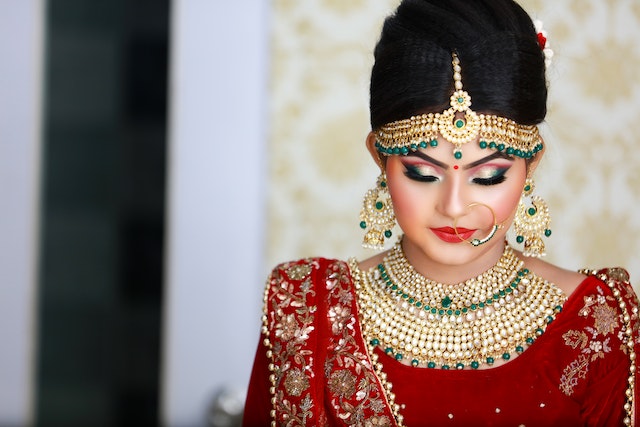India’s rich cultural tapestry is woven with threads of tradition, history, and artistry, and nowhere is this more evident than in its jewelry. Indian jewelry is a mesmerizing blend of craftsmanship, symbolism, and heritage that has adorned generations for centuries. Each piece carries a story, a legacy, and a reflection of the diverse and vibrant culture that defines the nation. In this blog, we embark on a journey to explore the captivating realm of Indian jewelry.
The Timeless Craftsmanship: Indian jewelry craftsmanship is a testament to the mastery of artisans who have perfected their skills over generations. Intricacy and attention to detail define this art form, whether it’s the delicate filigree of Rajasthan, the elaborate Kundan work of Gujarat, or the bold temple jewelry of the South. These pieces aren’t just accessories; they’re intricate works of art that have been carefully crafted to withstand the test of time.
A Kaleidoscope of Gemstones: Gemstones play a pivotal role in Indian jewelry, adding a burst of color and vibrancy to every piece. From the deep blues of sapphires to the fiery reds of rubies and the lush greens of emeralds, gemstones are carefully chosen to align with cultural significance and personal beliefs. Astrological considerations also play a role in determining which gemstones are best suited for an individual, making each piece not just aesthetically pleasing but also spiritually meaningful.
Symbolism and Stories: Indian jewelry isn’t just about beauty; it’s about symbolism and storytelling. Many pieces are adorned with symbols that hold deep cultural and religious meanings. The ‘Mangalsutra,’ a black beaded necklace, signifies marital status, while the ‘Nath,’ a nose ring, is associated with feminine grace. The ‘Maang Tikka’ adorning the forehead symbolizes the third eye and intuition. Every piece has a story to tell, making Indian jewelry a visual representation of cultural values and beliefs.
A Modern Twist on Tradition: While steeped in tradition, Indian jewelry has also embraced modern influences. Contemporary designers are finding innovative ways to blend traditional elements with modern aesthetics, creating pieces that resonate with a younger generation. The fusion of old and new has resulted in jewelry that can seamlessly transition from traditional ceremonies to chic social gatherings.
Celebrating Diversity: India’s vast and diverse landscape is mirrored in its jewelry. From the intricate ‘Jadau’ work of Rajasthan to the minimalistic elegance of Kerala’s ‘Mohanmala,’ every region has its unique style and signature. The jewelry reflects not only the geographical diversity but also the cultural nuances that make India so intriguingly multifaceted.
Conclusion: Indian jewelry is more than just embellishment; it’s an embodiment of the nation’s soul, a celebration of its past, present, and future. The intricate craftsmanship, the symbolism, the stories – all come together to create a mesmerizing art form that transcends time. Whether it’s the heirloom passed down through generations or the contemporary piece that captures the essence of modern India, Indian jewelry continues to dazzle, enchant, and tell tales of a culture rich in beauty and traditio
